Arabuko Sokoke is the largest patch of East African coastal forest left in the world. This biological region holds many intriguing endemics, many of which are restricted to this and few other well-preserved patches. When our University of Helsinki field course along central Kenya on January and February last year ended, flying down to the coast and visiting this groove was the main motivation for Aina Rossinyol and me to allocate some extra days in the country.
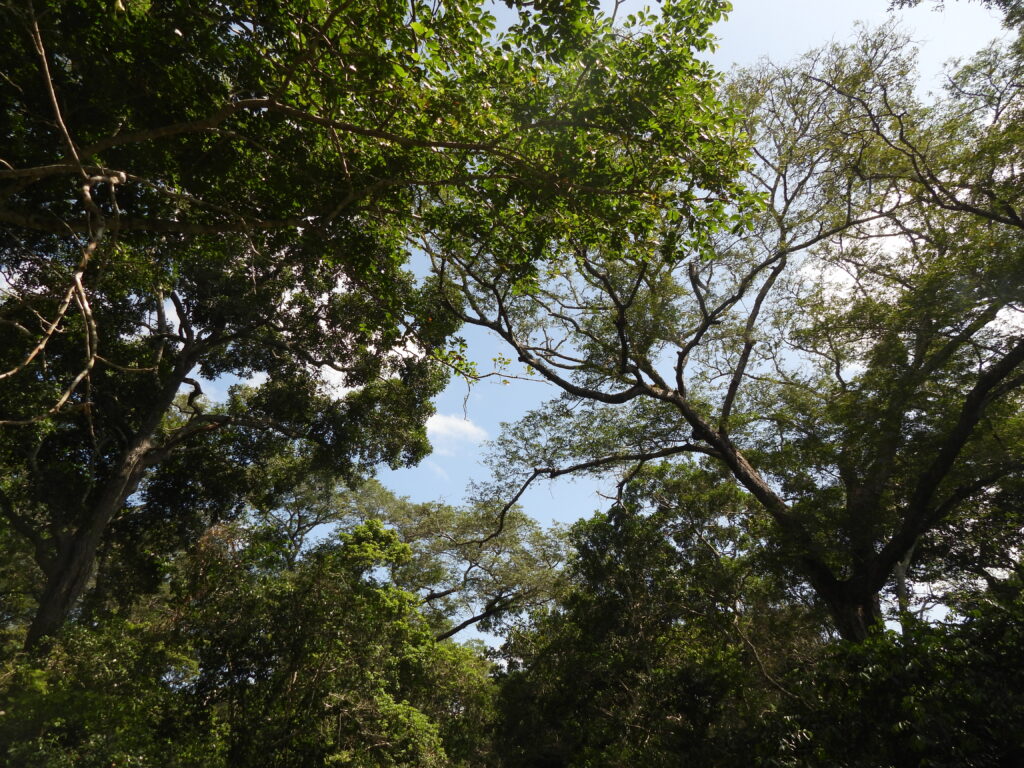
Our course professors helped us sharing some contacts of guides and accommodation. We ended up camping with our tent at the garden of Mwamba Field Study Center, located at Garoda beach in Watamu and managed by the Christian environmental organization A Rocha. We planned on birding on our own, but only the service of a guide could effectively help us connect with our different targets at the forest. We relied on Jonathan from Arabuko Walking Forest to, indeed, walk Arabuko-Sokoke National Park.
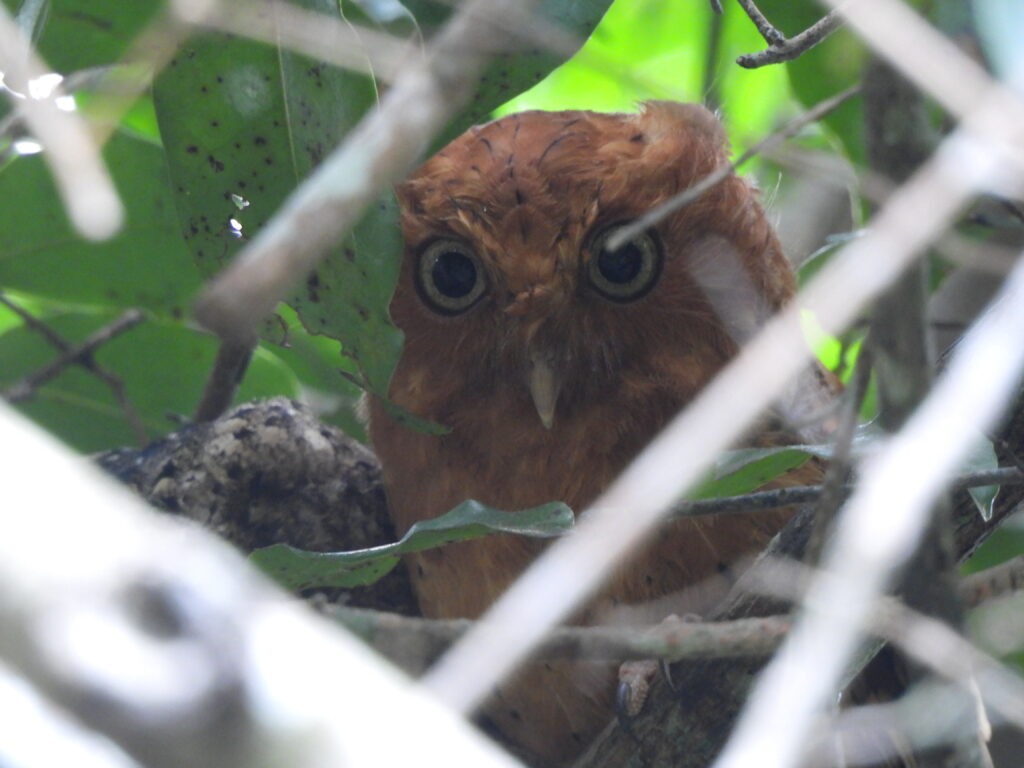
Jonathan received us at Arabuko Sokoke NP headquarters before dawn and soon magic starts. After a quick introduction and paying for the park fee (600 KSH, 4.3 EUR per person), we got into the forest. The walk ahead aimed at finding the Sokoke scops-owl (Otus ireneae) at roost, a poorly-known endangered species first discovered in 1965 and restricted to Cynometra tree patches within few coastal forest patches. Hiking towards the closest known roosts nowadays takes ca. 20 km under the scorching sun, either by car or — as in our case — walking.
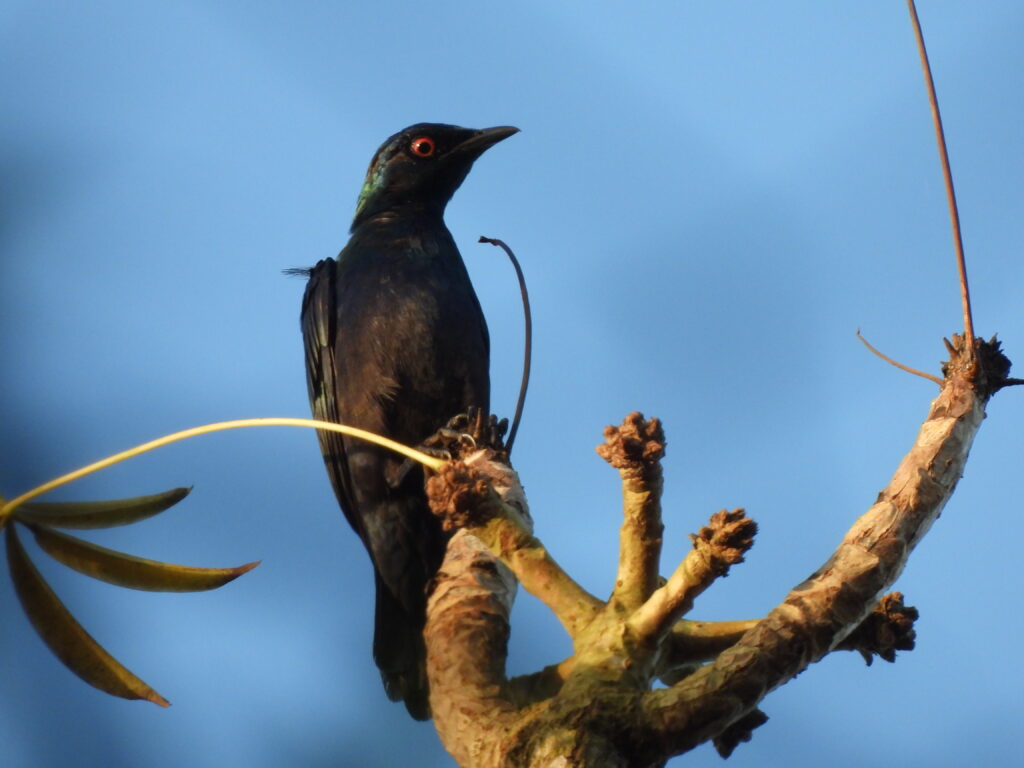
Around the main office, three African wood-owls (Strix woodfordii) rested on top of a tree. Soon after, we spot the first ashy flycatchers (Fraseria caerulescens) and black-bellied starlings (Notopholia corusca) of the day. It didn’t take long until we bumped into one of the targets, the golden-rumped sengi (Rhynchocyon chrysopygus), a diurnal elephant-shrew mainly restricted to Arabuko Sokoke coastal forest, foraging quietly before fading in the understory around the main office — we would see four of them along the day, as rabbit-sized creatures running under the vegetation.
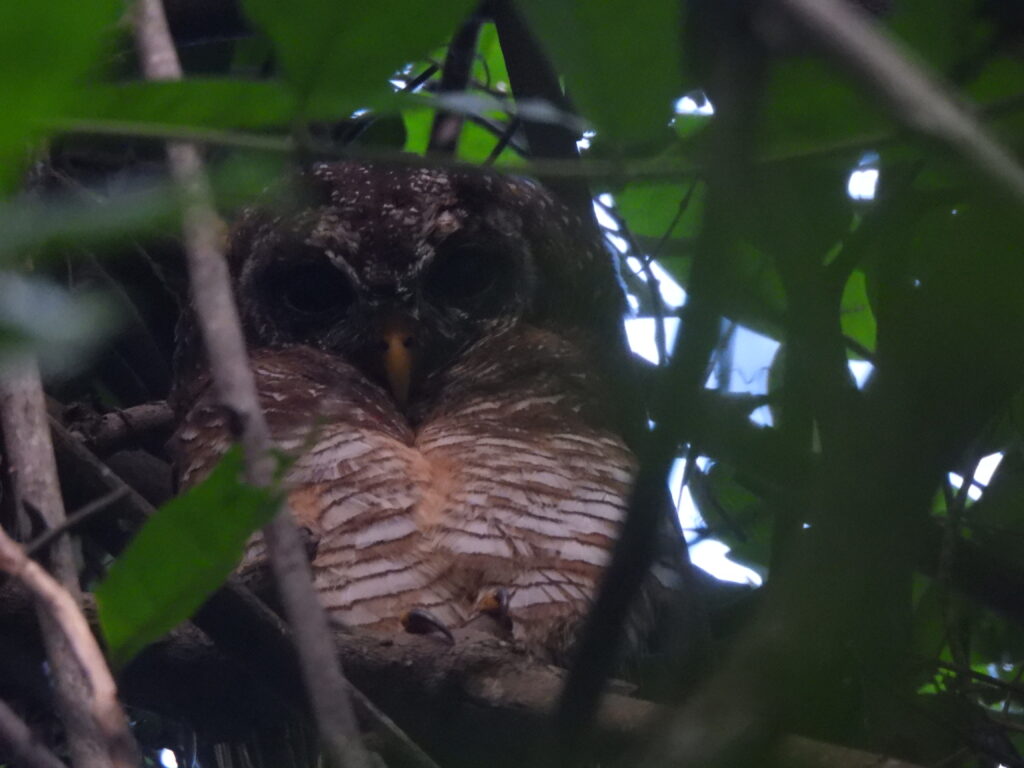
There are three main forest types in Arabuko Sokoke. The beginning of our walk took place in mixed forest, a diverse formation of tall trees and dense vegetation. Here we connected with several green barbets (Cryptolybia olivacea), European golden orioles (Oriolus oriolus) and African black-headed orioles (Oriolus larvatus). A side path brought us to a thick area where we got brief views of the skulky eastern nicator (Nicator gularis), as well as a pair of the endangered and extremely range-restricted Amani sunbird (Hedydipna pallidigaster) associated to several collared sunbirds (Hedydipna collaris).
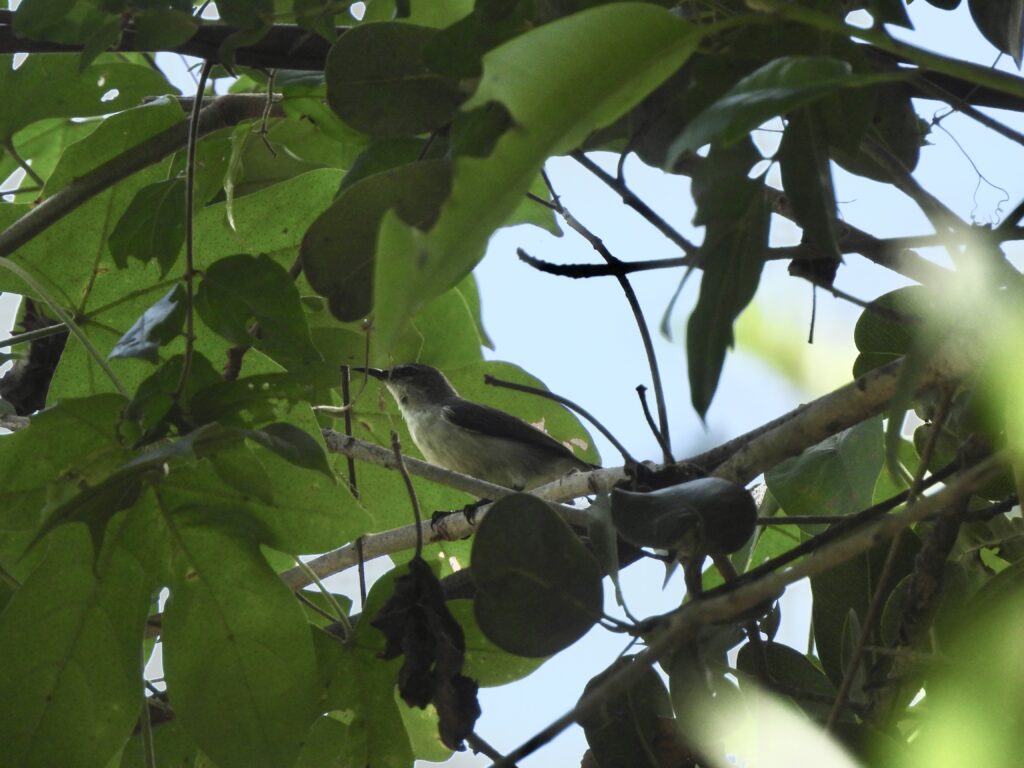
An open forest area provided an opportunity to connect with distant birds. White-throated bee-eaters (Merops albicollis), striped kingfisher (Halcyon chelicuti), Dodson’s bulbul (Pycnonotus barbatus dodsoni), pale flycatcher (Agricola pallidus), black-backed puffback (Dryoscopus cubla), pale batis (Batis soror) and black-and-white mannikin (Spermestes bicolor) are some of the species we spotted, plus lizard buzzard (Kaupifalco monogrammicus) heard. On a different area with similar habitat configuration, we heard Fischer’s turacos (Tauraco fischeri) close to their nest and, while waiting for them to show up to no avail, an African goshawk (Aerospiza tachiro) carrying a prey flies fast over us at close distance.
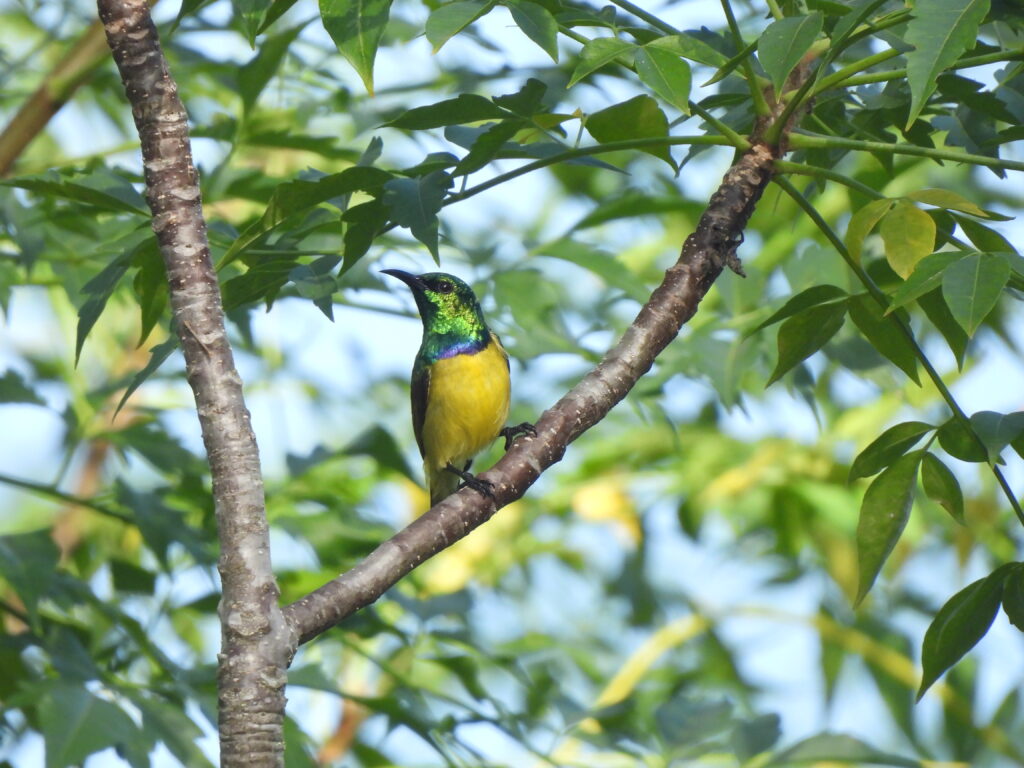
Things got very interesting when we got into a thicker forest after the open area — perhaps the most rainforest-like birding of the whole trip. We bumped into several mixed-species flocks, and Jonathan paid great effort to help us connect with all the species within them. Yellow flycatchers (Erythrocercus holochlorus) seemed pretty abundant in the flocks, thought we struggled to photograph them due to their skulky, very active behavior — like most of the species seen in this area.
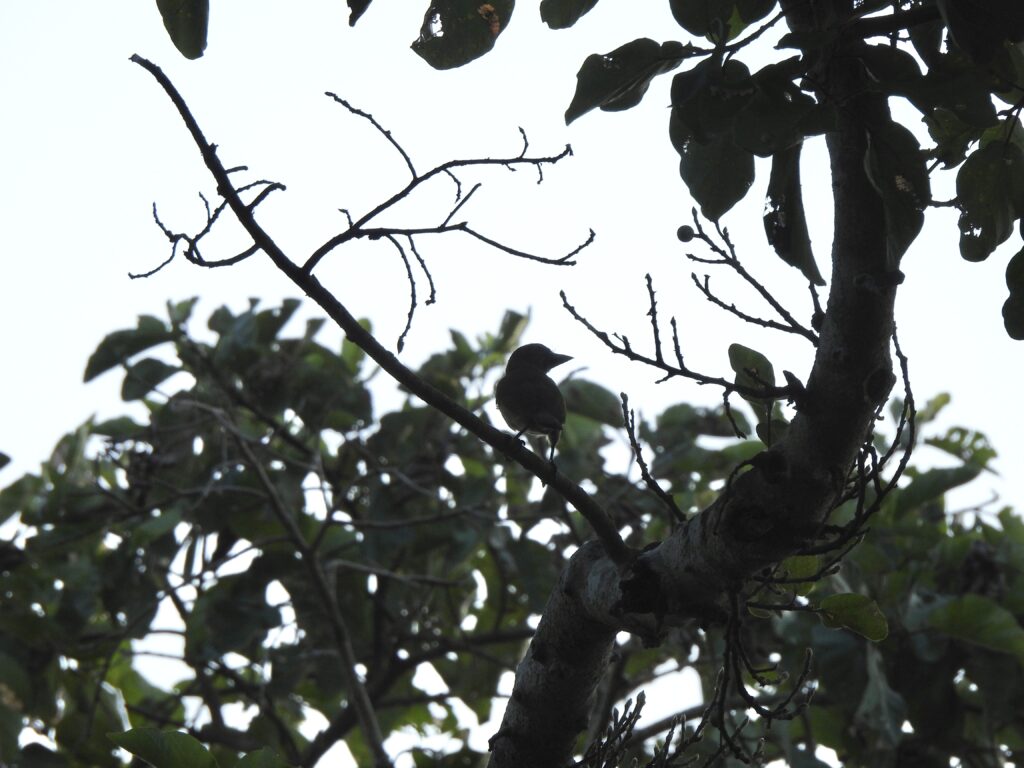
Short-tailed batis (Batis mixta), African crested flycatcher (Trochocercus cyanomelas), black-headed apalis (Apalis melanocephala), plain-backed sunbird (Anthreptes reichenowi), olive sunbird (Cyanomitra olivacea), sombre greenbul (Andropadus importunus), tiny greenbul (Phyllastrephus debilis) and Fischer’s greenbul (Phyllastrephus fischeri) were also part of the flocks, and Jonathan skillfuly went through them. Even a black goshawk (Astur melanoleucus) made a quick appearance.

The intensity felt when surrounded by one of those flocks contrasted with the calmness during the rest of the walk. A male dark-backed weaver (Ploceus bicolor) flew over the trail and we soon spotted a nest hanging from a branch over the path. Monospecific flocks of chestnut-fronted helmetshrike (Prionops scopifrons) provided good views at times. The loud calls of red bush squirrels (Paraxerus palliatus) and the noises from jumping Sykes’s monkeys (Cercopithecus mitis albogularis) made them evident.

Although trucks and cars crossed the roads of the park often, we walked during the whole day. A considerable part of the trails are open enough to let the scorching sun in, and the torrid temperatures made us feel exhausted during most of the 25 km route. Walking allowed us to connect with over 50 species, but things got very intense at a certain point in the thick forest, when big noises came from merely few meters right from us in the forest. A lone male African savanna elephant (Loxodonta africana) aimed to cross the road as we walked next to the point where it foraged unnoticed. A quick adrenaline shoot made us three run away further up the trail and hide in some distant bushes, between laughs of surprise and relief. Savanna elephants are uncommon in the park and Jonathan informed us that this rarely happens — I never expected to ever run away from one, but it all turned into a funny, adventurous anecdote.
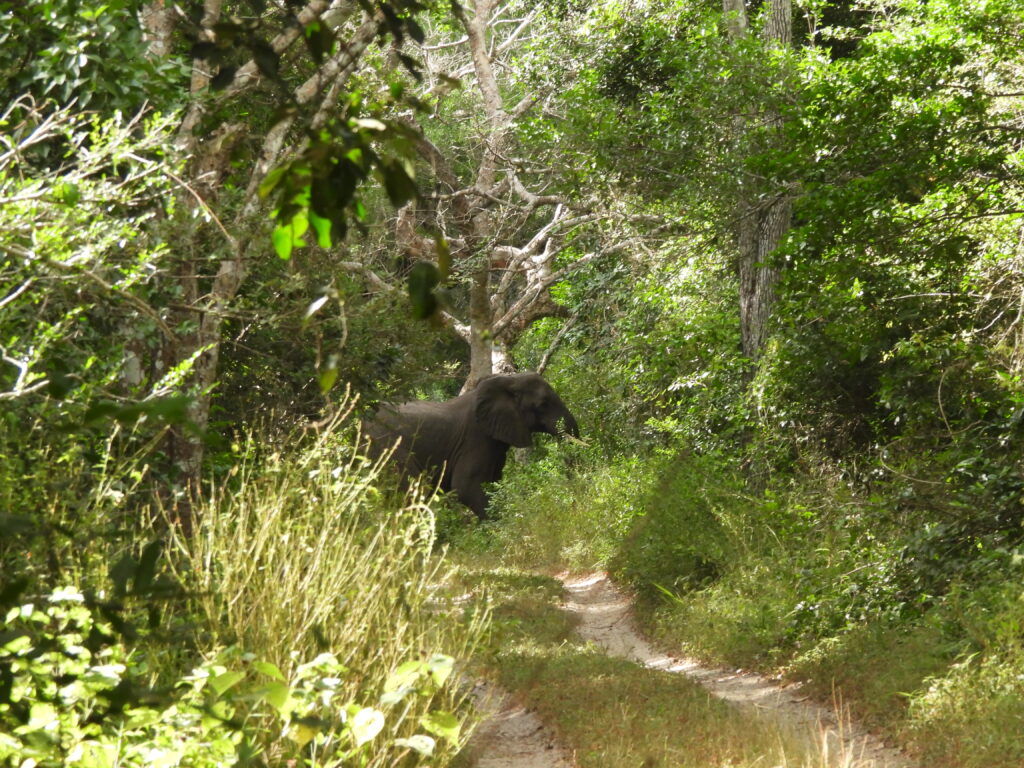
At some point we reached the second forest type in Arabuko Sokoke, the Brachystegia woodland. This stretch was long and sunny, and we had a hard time keeping up. Most birds noticed were only heard, including tambourine dove (Turtur tympanistria), emerald-spotted wood-dove (Turtur chalcospilos), white-browed coucal (Centropus superciliaris), European bee-eater (Merops apiaster), Zanzibar boubou (Laniarius sublacteus) and scaly babbler (Turdoides squamulata).
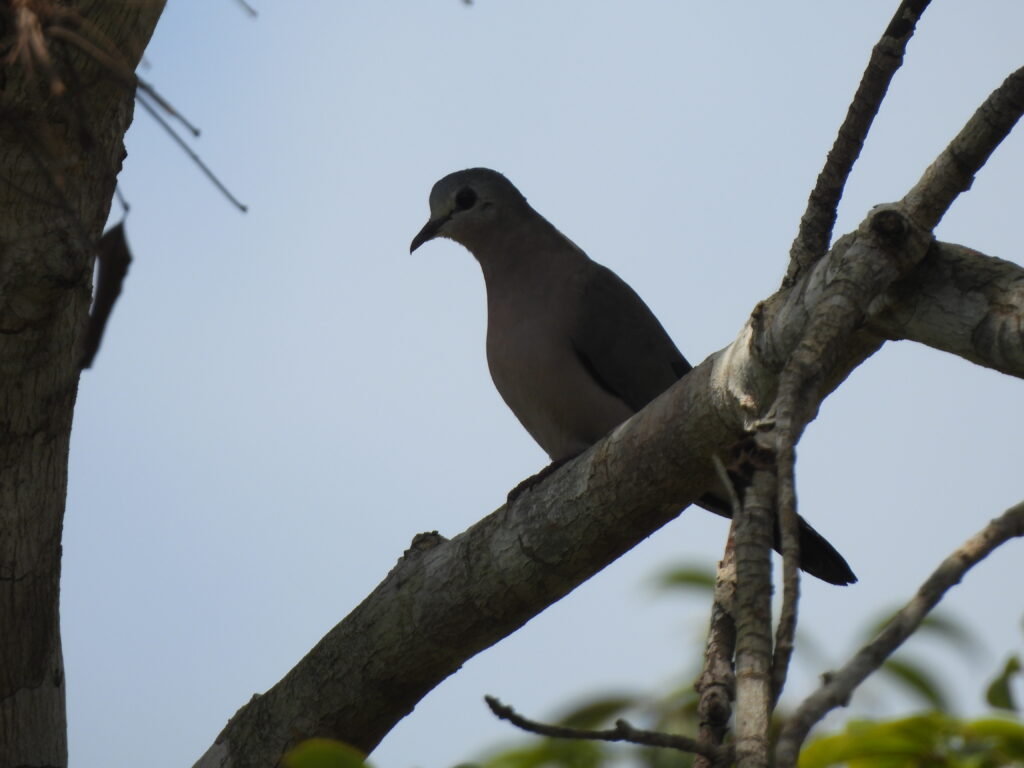
The Brachystegia woodlands grow over white soils whereas the third forest type, the low-height Cynometria thicket, grows in red soils. The abrupt change in the soil composition creates seasonal lagoons. One of them, the Elephant swamp, is located between the trail and the forest edge. Several knob-billed ducks (Sarkidiornis melanotos) and family groups of white-faced whistling-ducks (Dendrocygna viduata) sat on the wet grassland around the lake. African jacanas (Actophilornis africanus), wood sandpipers (Tringa glareola), hadada ibises (Bostrychia hagedash), black-headed heron (Ardea melanocephala) and gray herons (Ardea cinerea) were also present.
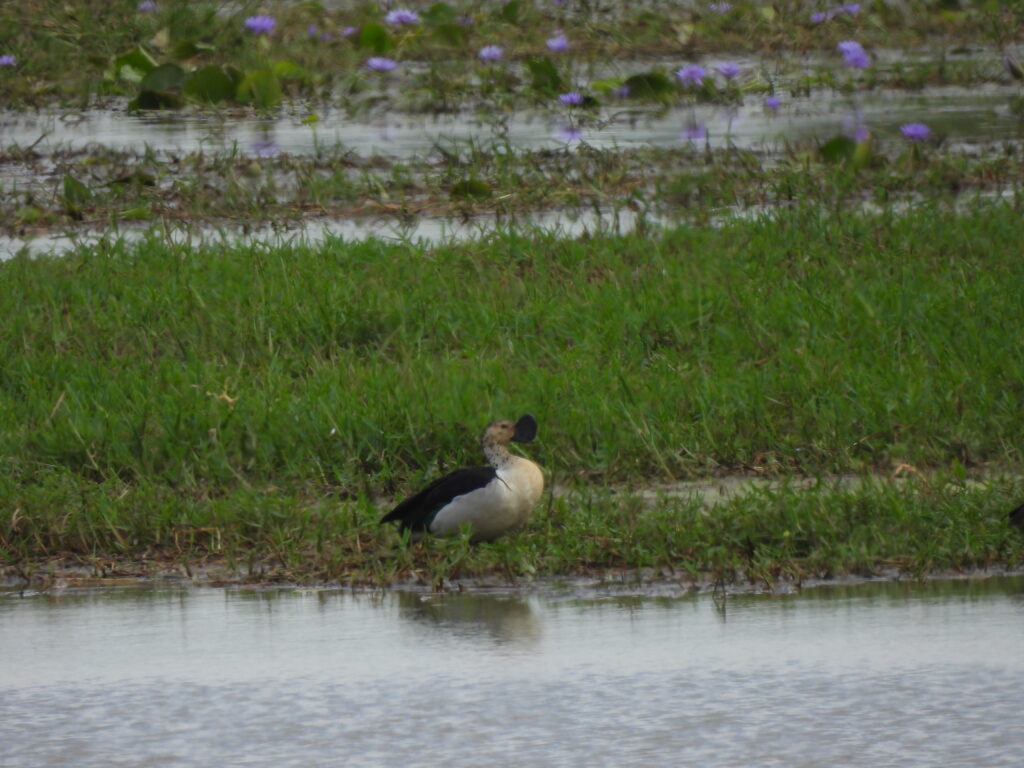
Getting into the Cynometria thicket was a relief as the highlight of the tour only lives in this forest type, over 10 km away from the park gate. At our arrival, Jonathan manages to spot a calling green tinkerbird (Pogoniulus simplex) which provides obliging views, unlike a Mombasa woodpecker (Campethera mombassica) that only I missed for a second. We keep on walking for a good couple of kms, entering the forest at different points. Eastern nicators and Zanzibar boubous could be heard in the woods.
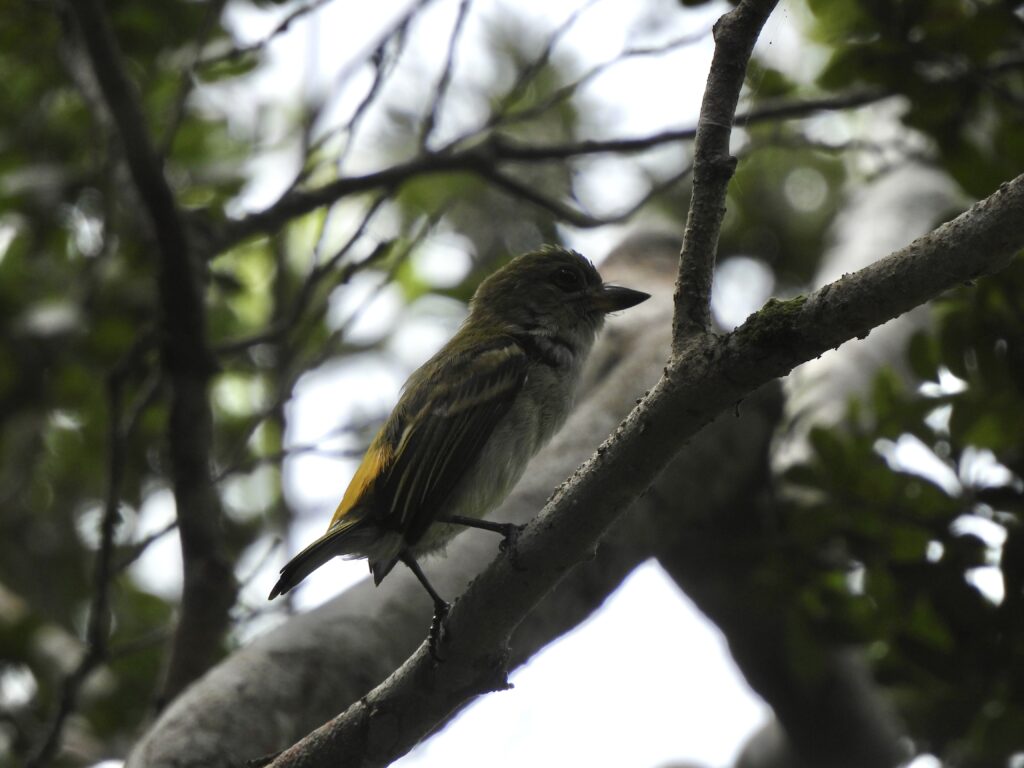
In one of the pit stops, Jonathan spotted a roosting pair of Sokoke scops-owl, one orange morph and the other gray morph. This beautiful tiny owl has most of its global population living in this Cynometria forest patch. Very little is known about their biology — although Brachylaena trees provide numerous holes (favored by other scops-owl species), Jonathan explained how the nest of this species has never been documented. We rushed to take tens of pictures of this picturesque pair sitting deep in the vegetation from a distance, trying to avoid unnecessary stress, and soon left. At that point, the long walk felt completely worth it.
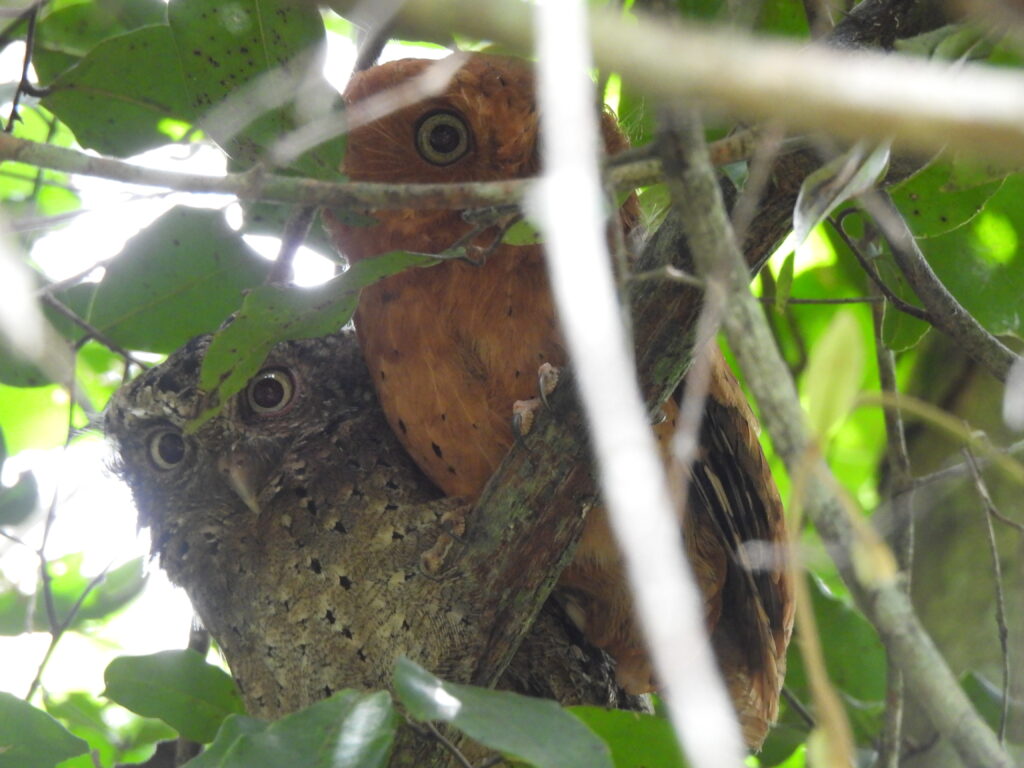
Satisfied after finding the owls, we headed back along a different trail, less sunny but still long and less eventful than the morning, with some chestnut-fronted helmetshrikes and fork-tailed drongos (Dicrurus adsimilis) seen.
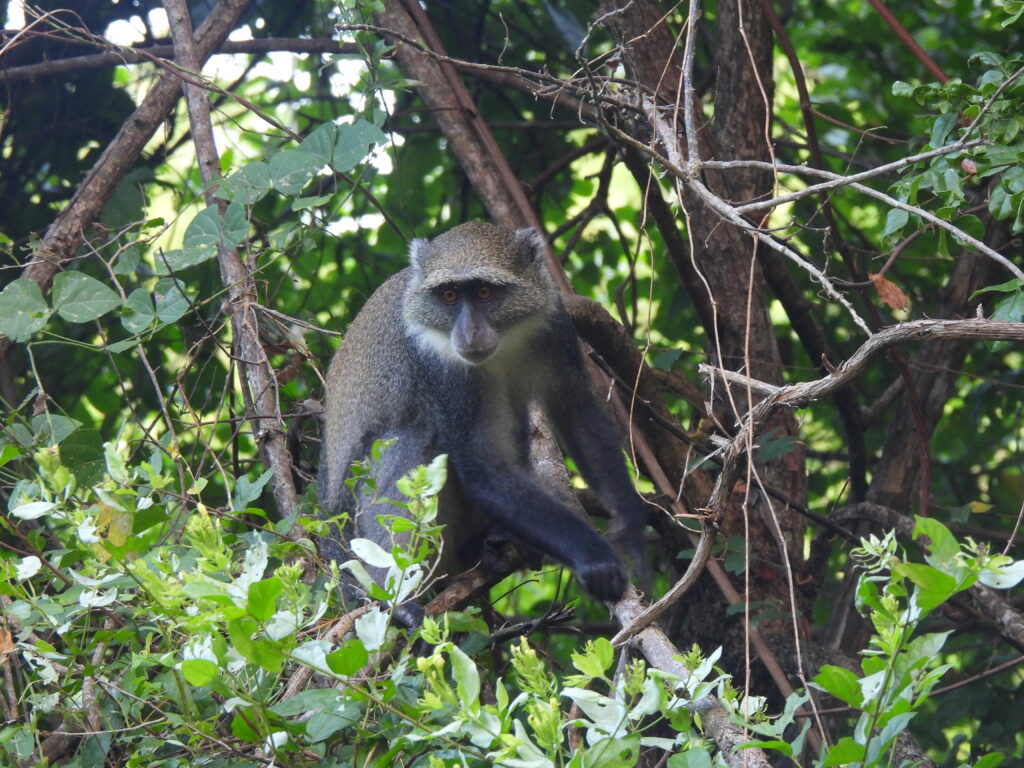
Fresh elephant dung was visited by many colorful butterflies, but its presence made the next encounter obvious. The same male savanna elephant happened to be again next to this different path, but this time we noticed it at a point when we couldn’t continue walking the path safely. Jonathan suggested entering into the thickness on the other side of the path and creeping through ahead, keeping a safe distance from where we thought the elephant was and hoping it wouldn’t mind us. Hesitating but with no other options, we followed his fast and skillful pace through the vegetation. After several intense minutes and a couple of wounds from piercing branches, we left the forest safe and sound.
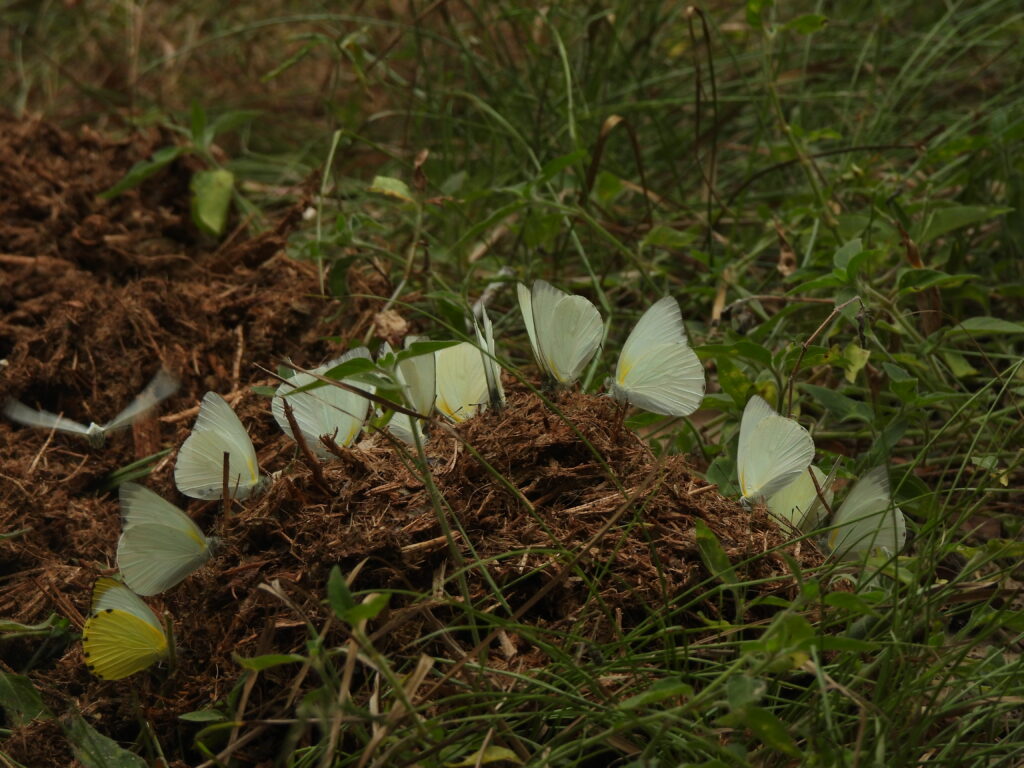
The last stretch of road produced a flyover juvenile martial eagle (Polemaetus bellicosus) sporting its cracking pied looks. Not too far, a brown-morph European honey-buzzard (Pernis apivorus) was an unexpected addition. A yellow-billed kite (Milvus aegyptius) was another raptor seen right before reaching a different park gate, before we expected it — finding less wildlife also meant walking faster. A the tuk-tuk driver waited for us and we called it a day, making it back to Mwamba and enjoying the rest of the day down at Garoda beach.

Arabuko-Sokoke forest ended up as a highlight of our trip to Kenya: hiking in a National Park is a rara avis in the country, and the diversity of birds connected was striking. The forest holds numerous endemics and other specialties worth a longer visit, but our one-day hike was a productive insight to the forest wildlife.

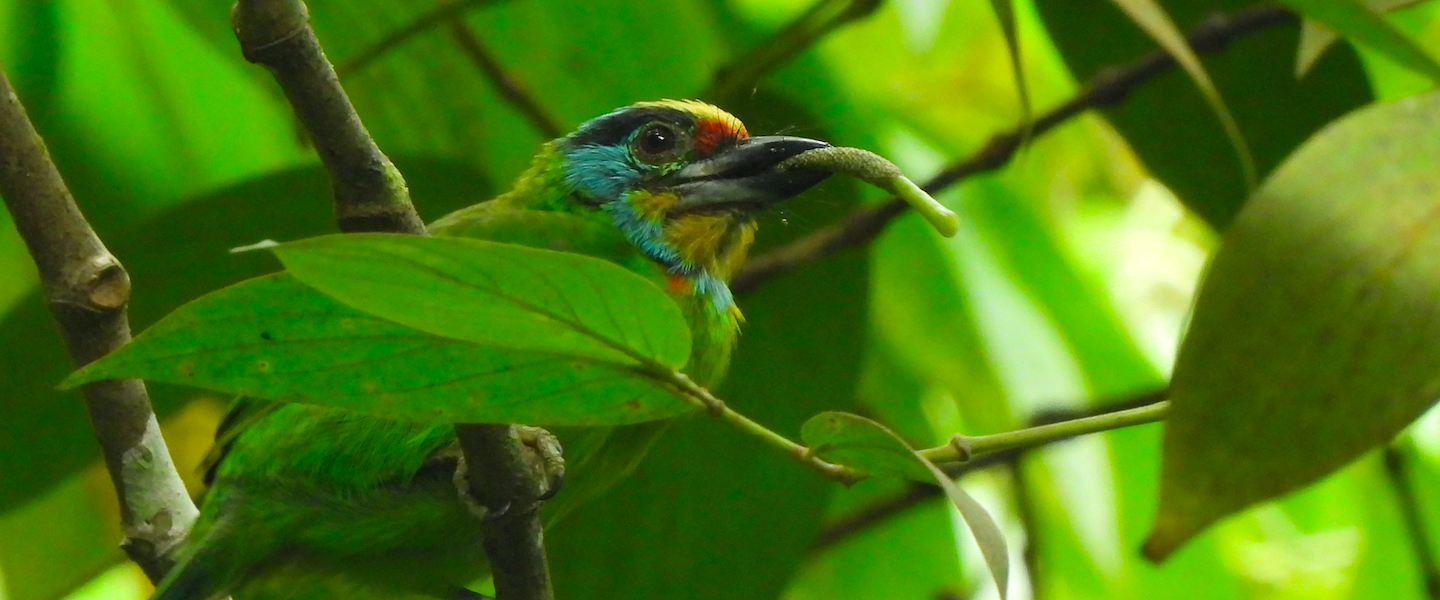



Comments are closed